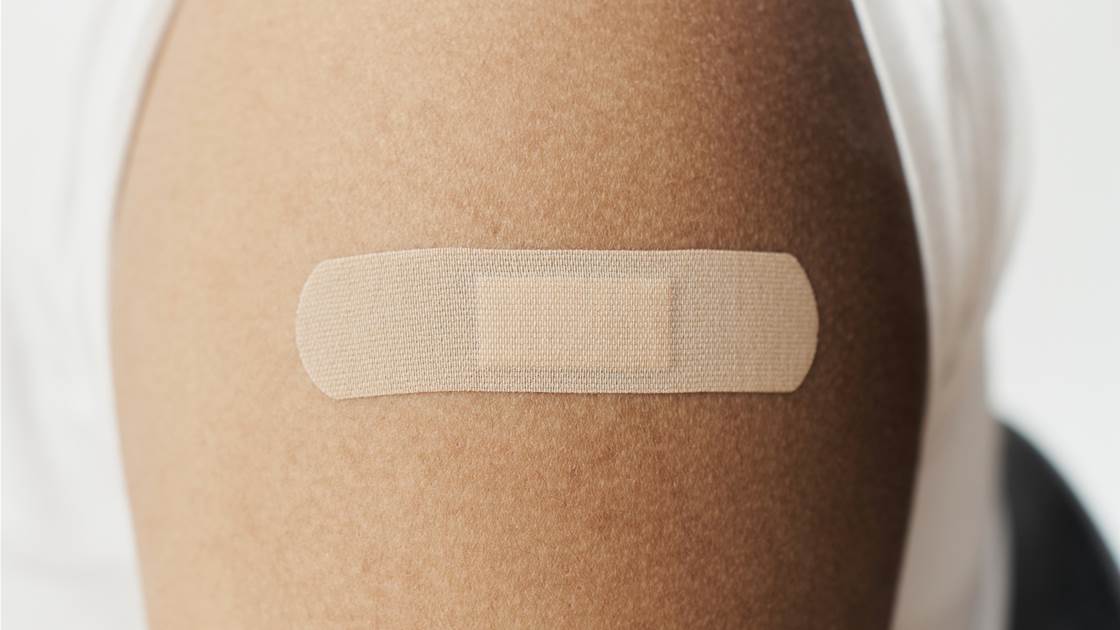There’s a wide range of side effects you could experience after you get the COVID-19 vaccine—including no reaction at all. But arm soreness is one of the most common, in addition to other symptoms like a mild fever or chills, fatigue, a headache, or muscle aches. One tip that can help is to: Use or exercise your arm.
Should you do gentle stretches? Or more significant movements? Experts agree that this can be a helpful strategy post-vaccination. Here’s how to exercise your arm after your vaccine, so you can try to avoid some discomfort.
First, why does your arm get sore after the COVID-19 vaccine?
Arm soreness isn’t unique to the COVID-19 vaccine—the side effect can also occur with other vaccines, like the flu shot, says sports medicine specialist Dr Irvin Sulapas.
However, the COVID-19 vaccine does get injected into the muscle in your arm—the deltoid muscle, if you want to get specific. The hiccup here is that the injection can cause tiny tears in the muscle, says pharmacist Jamie Alan, PhD. This can cause inflammation in the area around the shot, leading to mild pain, soreness, or tenderness for a day or two.
Your arm—and other parts of your body—can also get sore because your immune system is doing what it should be doing: reacting to the vaccine, says registered nurse, Aline Holmes. These vaccines essentially trick your body into thinking it’s being exposed to the novel coronavirus, so your immune system sends out infection-fighting cells to attack the perceived (but nonexistent) threat, and that can lead to flu-like symptoms.
Why can exercising your arm after the vaccine help reduce soreness?
It all comes down to stretching out the surrounding arm muscles. For the same reason that you would stretch or move any muscle that’s sore, say, after a tough workout, “exercising or moving the arm around can help promote blood flow to the area and thus reduce the soreness or pain,” says Dr Sulapas.
What kind of arm exercises should you do after you’ve been vaccinated?
You don’t need to go overboard here and do any vigorous exercises like lifting weights (unless that’s your normal), Alan says.
“Normal everyday use of one’s arm will help,” Dr Sulapas says. If you want to go the extra mile, though, he suggests doing arm circles “both small and big” sporadically after you’ve gotten the vaccine. You can also do “gentle shoulder stretches” to promote blood flow to the area.
Another remedy for dealing with a sore arm post-vaccination is to apply a cool, clean, wet washcloth to the area to help soothe it.
It’s really important to listen to your entire body, though. If you experience a fever, chills, or a general feeling of being unwell, keep the arm exercises gentle and give your body some time to rest as it responds to the vaccine.
Does it matter which arm you get the shot in?
Many vaccination sites will give you the option to choose which arm you get the injection in. Since there’s a chance the vaccine can interfere with your day, it doesn’t hurt to choose wisely.
While experts say either arm is fine, they generally suggest using your non-dominant side, just in case you have more severe soreness. Still, they say, a sore arm from the COVID-19 vaccine isn’t worth stressing over—it will pass fairly quickly.
“The side effect of the sore arm is temporary, and in most cases it’s mild,” Dr Sulapas says. “It shouldn’t affect you too much, even if you decide to get the vaccine in your dominant arm.”
This article is accurate as of press time. However, as the COVID-19 pandemic rapidly evolves and the scientific community’s understanding of coronavirus develops, some of the information may have changed since it was last updated. While we aim to keep all of our stories up to date, please visit online resources provided by WHO, and the Department of Health to stay informed on the latest news. Always talk to your doctor for professional medical advice.






.png&h=193&w=250&c=1&s=1)
.png&h=193&w=250&c=1&s=1)

